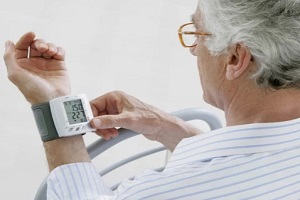 Blood pressure represents the force your blood exerts on the arteries when your heart pumps. Hypertension, on the other hand, emerges when blood pressure stays at a high level constantly. Hypertension can arise from several causes, including age, family history, obesity, and unhealthy lifestyle habits such as smoking and excessive alcohol consumption.
Blood pressure represents the force your blood exerts on the arteries when your heart pumps. Hypertension, on the other hand, emerges when blood pressure stays at a high level constantly. Hypertension can arise from several causes, including age, family history, obesity, and unhealthy lifestyle habits such as smoking and excessive alcohol consumption.
Consistently high blood pressure can notably impair your health, potentially damaging your blood vessels and organs, notably your heart, brain, eyes, and kidneys, making it imperative to understand the stages of hypertension.
The Stages of Blood Pressure and Hypertension
A blood pressure measurement is displayed as two numbers. Systolic pressure, which is the top number, represents the level of arterial pressure when your heart is beating.
Diastolic pressure, which is the bottom number, signifies the pressure when your heart is stopped between beats. Healthcare professionals categorize these measurements into five stages that help diagnose and manage hypertension effectively.
Stage 1: Normal Blood Pressure
Normal blood pressure is typically considered any reading that falls below a systolic of 130 mm Hg and a diastolic of 80 mm Hg. It’s essential that you maintain this stage to ensure your overall health.
Keeping active, consuming a balanced diet, limiting alcohol intake, and avoiding tobacco products, amongst other things, helps keep your blood pressure in the normal range. Moreover, frequently monitoring your blood pressure allows for early detection of sudden fluctuations.
Stage 2: Prehypertension
 Prehypertension bridges the gap between normal blood pressure and hypertension. Suppose your blood pressure readings usually range between a systolic of 130-139 mm Hg and a diastolic of 80-89 mm Hg. In that case, you are in the prehypertension stage. At this point, you’re susceptible to developing hypertension in the future.
Prehypertension bridges the gap between normal blood pressure and hypertension. Suppose your blood pressure readings usually range between a systolic of 130-139 mm Hg and a diastolic of 80-89 mm Hg. In that case, you are in the prehypertension stage. At this point, you’re susceptible to developing hypertension in the future.
You may not notice glaring symptoms at this stage, making regular check-ups crucial. Your healthcare provider might recommend lifestyle modifications or even medication in some cases.
Stage 3: Stage 1 Hypertension
When your blood pressure measurements regularly fall between 140/90 mm Hg to 159/99 mm Hg, you’ve officially entered the initial hypertension stage. It’s possible to experience headaches, shortness of breath, or nosebleeds at this stage. Still, many people won’t notice any significant symptoms.
The treatment for Stage 1 hypertension typically involves both lifestyle changes and prescribed medication. Regular blood pressure monitoring, timely use of medicines, and frequent consultations with your healthcare provider are of the essence.
Stage 4: Stage 2 Hypertension
When blood pressure readings consistently reach or surpass 160/100 mm Hg, you have moved into Stage 2 hypertension. This stage may bring about more noticeable symptoms, such as fatigue, confusion, blurry vision, chest pain, irregular heartbeat, and pounding in your chest, neck, or ears.
Swift medical intervention is crucial once you reach this stage. Your doctor will likely advise a combination of blood pressure medication and lifestyle changes. Regular medical consultations become increasingly important.
Stage 5: The Hypertensive Crisis
While a hypertensive crisis doesn’t neatly fit into the tiered “stages” of hypertension, it’s an acutely severe outcome related to elevated blood pressure that you must be aware of. A hypertensive crisis occurs when your blood pressure suddenly escalates to readings exceeding 180/120 mm Hg.
Unlike the other stages of hypertension, a hypertensive crisis isn’t a natural progression but an emergency scenario. It’s characterized by severe headaches, heightened anxiety, breathing difficulty, and nosebleeds.
If a hypertensive crisis is suspected, you must seek immediate medical care without delay. In the face of these alarming symptoms, proceeding to the closest emergency medical facility is imperative. Leaving this severe hypertension complication unattended could potentially culminate into life-threatening conditions, such as organ damage.
The Importance of Regular Monitoring and Diagnosis
 Incorporating regular blood pressure monitoring into your health routine is not merely encouraged—it’s critical. You have plenty of choices when it comes to monitoring. You can take blood pressure readings at home, your pharmacy, or a healthcare facility.
Incorporating regular blood pressure monitoring into your health routine is not merely encouraged—it’s critical. You have plenty of choices when it comes to monitoring. You can take blood pressure readings at home, your pharmacy, or a healthcare facility.
Remember that one high reading doesn’t qualify for a hypertension diagnosis; your healthcare provider will be keen to observe consistent readings over time.
If there are reasons to suspect hypertension, additional tests might be prescribed to confirm the diagnosis and rule out any underlying conditions. These tests could range from cholesterol and kidney function tests to an electrocardiogram or an ultrasound of your heart or kidneys.
Get Personalized Hypertension Care from Imperial Center Family Medicine
Understanding and managing your hypertension hinges on recognizing its various stages. Even though you might not notice any overt symptoms, hypertension could quietly be progressing within you. While you can regularly check your blood pressure and make proactive healthy choices, frequently consulting with a dedicated healthcare provider is essential.
Imperial Center Family Medicine’s team of professionals is here to support you with comprehensive and personalized hypertension care that aligns with your unique needs. Contact us today at 919-873-4437 or online and let us help you navigate the stages of hypertension more effectively for a healthier future.
